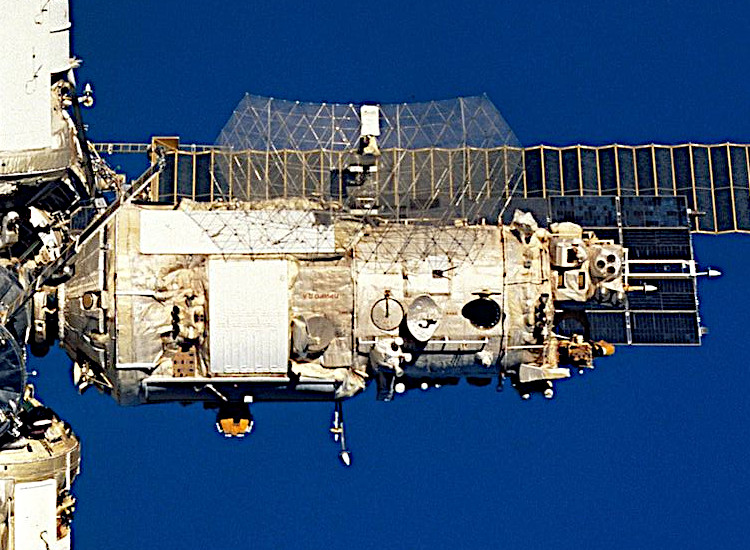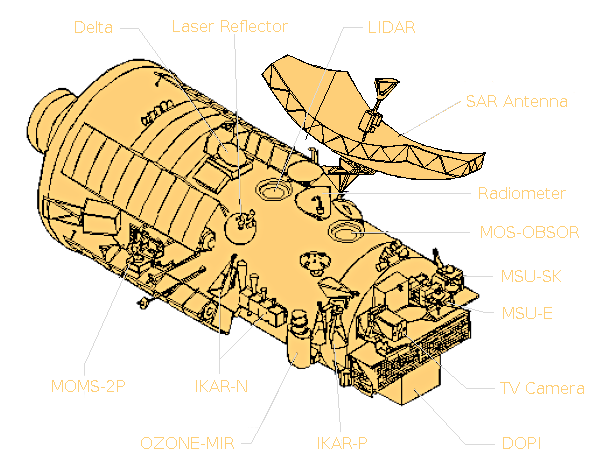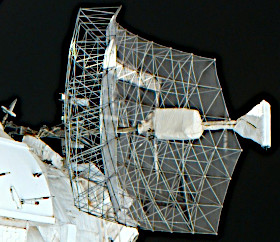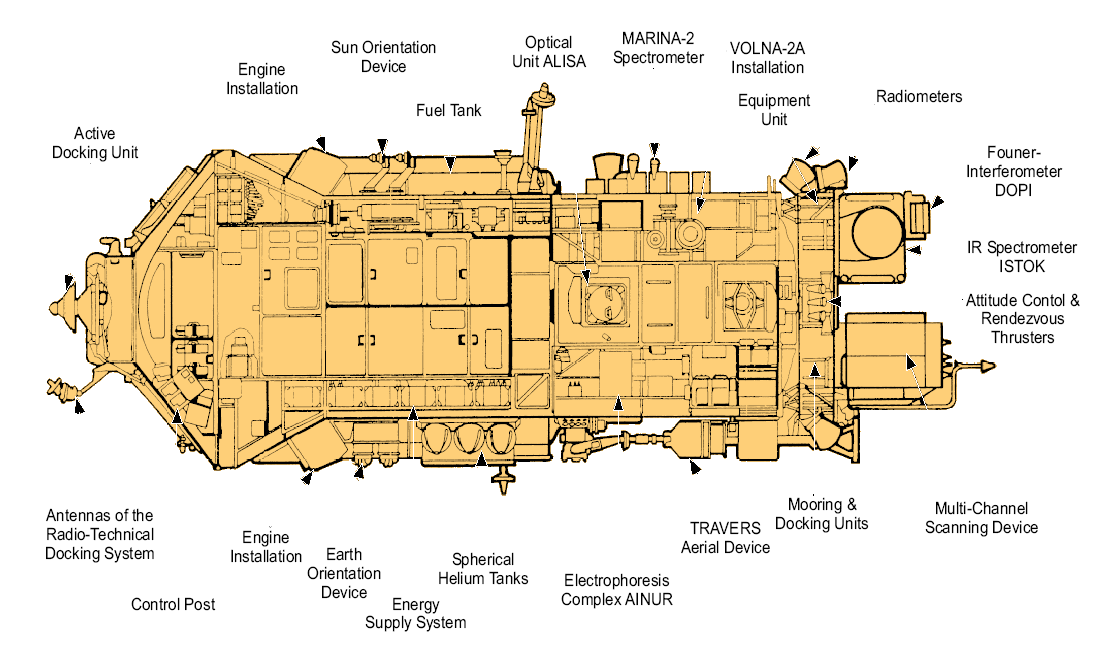
Kristall is connected to the zenith (top) port of the Core Module.


Kristall is connected to the zenith (top) port of the Core Module.

Priroda (English: Nature) (TsM-I, 77KSI, 11F77I) was the seventh and final module of the Mir Space Station. Its primary purpose was to conduct Earth resource experiments through remote sensing and to develop and verify remote sensing methods.

Priroda was originally designed to carry a deployable solar array. However, due to delays, it was not included in the launch configuration. Instead Priroda was powered by two redundant sets of batteries totaling.
Priroda had an unpressurized compartment contained propulsion system components, EVA handrails, and scientific equipment.
It also had a pressurized instrument/payload compartment which was divided into two sections: an outer instrument section and an inner habitation and work compartment.
Priroda's experiments were provided by twelve different nations. These experiments covered microwave, visible, near infrared, and infrared spectral regions using both passive and active sounding methods.
The instruments used for these experiments included:-

* Alissa lidar - Measured cloud height, structure.
* Centaur 400 MHz receiver - Ocean buoy data
* DOPI interferometer - studies gases and aerosols.
* Greben ocean altimeter - 10 cm resolution.
* Ikar N nadir microwave radiometers.
* Ikar Delta scanning microwave radiometer system.
* Ikar P panoramic microwave radiometers.
* Istok 1 IR spectroradiometer.
* MOS-Obzor spectrometer - Ocean measurment..
* MOMS 02P Earth imager.
* MSU-E2 high resolution optical scanner.
* Ozon M spectrometer - Ozone/aerosol profiles.
* Travers Synthetic Aperture Radar.
Priroda was launched on April 23, 1996, on a Proton rocket. Due to an electrical problem, Priroda had only one attempt at docking before power would be lost. Priroda, however, docked with no problems on April 26.
After being moved to its permanent location at the +Z docking port on the core module, Priroda was connected to the rest of the station's electrical system. This allowed it to run off power from solar arrays on other modules.
During the last expedition to Mir in 2000, power loads were reportedly so high that the crew was not able to activate any of Priroda's payloads.
Priroda, along with the other Mir components, were destroyed when the Mir station was de-orbited in March 2001, entering the Earth's atmosphere.
Launch: April 23, 1996
Launch pad: Baikonur Cosmodrome
Docked: April 26, 1996
Reentry: March 21, 2001
Mass: 19,700 kg
Length: 9.7 metres
Diameter: 4.35 metres
Pressurised volume: 66 m3
Periapsis altitude: 385 km
Apoapsis altitude: 393 km
Orbital inclination: 51.6 degrees
Orbital period: 89.1 minutes
Orbits per day: 16.16
Days in orbit: 1,793 days

The Travers Synthetic Aperture Radar (SAR) uses a radar that creates two-dimensional images or three-dimensional reconstructions of objects.
It uses the motion of the radar antenna over a target to provide finer spatial resolution than conventional beam-scanning radars. The distance SAR travels over a target in the time taken for the radar pulses to return to the antenna creates the large synthetic antenna aperture (the size of the antenna).
Typically, the larger the aperture, the higher the image resolution will be, regardless of whether the aperture is physical or synthetic (a moving antenna).
Reference: Wikipedia - Synthetic-aperture Radar
